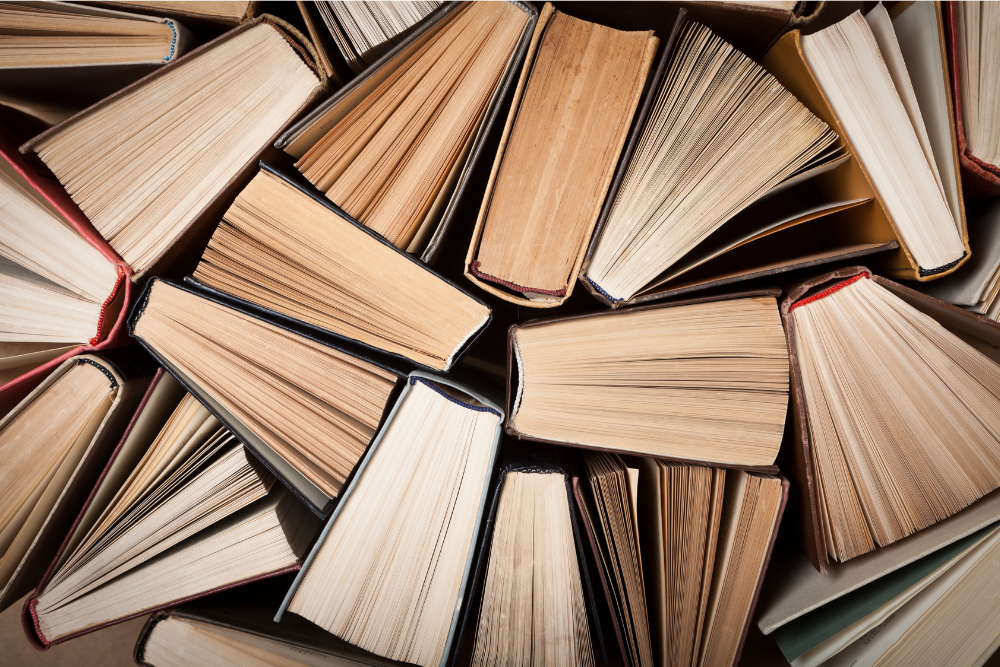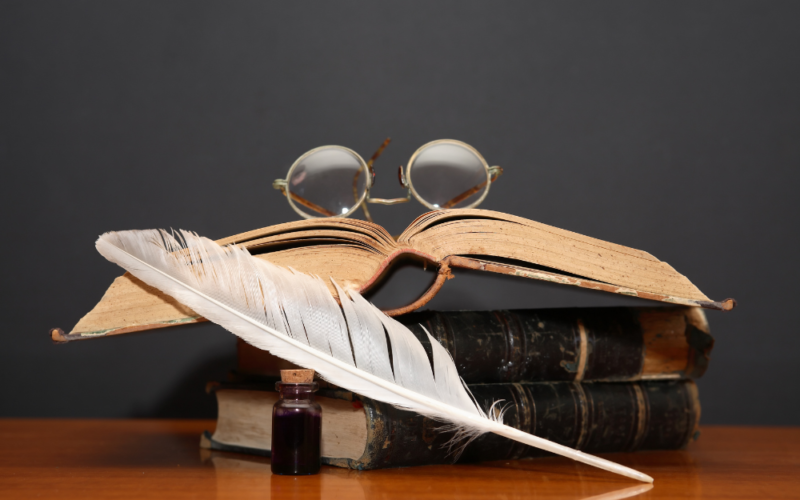Power of expression is God’s great gift to man, of his ability to express what he experiences deep inside. And the quality of man’s experience depends on the quality of life inside him, as explained by Plato: “It is not the eye that sees, it is the ‘I’ that sees.”
As Longinus has said, “Great accents are expected to fall from the lips of those whose thoughts are dignified.” This is the nature of creative process that lies at the root of all great art. The relatively poor quality of contemporary art lies in the fact that the artist creates not so much because he wants to relieve himself of the fullness of his art but because he wants to produce what brings him the most money. No wonder there is hardly any ‘inspired’ speech to be seen among the unprecedented volumes of words that assail man from all sides from internet to electronic media to printed word. Commercial motives and mechanical brains are not the recipe to produce a Milton. It is Economics and not Aesthetics that represents the primary impulse of modern history. Everything now has to be judged by the test of ‘economic success.’ Being a ‘best seller’ is the gauge of success and the best seller must give to mankind not what it needs but what it wants by pandering to its insecurities, lower tastes, or psychological wants. Whither the writings that radiate light and warmth for the hearts that are waiting to receive them.
Depth of experience is an essence for all great expression. When I say, for instance: “based on what I saw, Wolofs in Senegal are tall people,” the statement is open for further examination and verification. Someone who is sceptical about the veracity of my statement can only contradict me by saying that he has himself been to Senegal and he did not find that Wolofs were taller than normal. But he cannot validly deny the truth of my statement by that he came across a few Wolof people in Senegal who were very short in height. This is so because my statement is not made in a scientific sense but is a generalization based on immediate experience. It is perhaps common experience with those who begin to see that which harshly challenges the character of the real thing they see. Othello, influenced by powerful jealousy, sees much more in the fall of Desdemona’s handkerchief than could have been seen by a detached observer.
All perception is essentially a merger of the unbiased order of things as discovered and defined by scientific analysis of reality on one end and the subjective projection of percipient consciousness on the other. Aesthetic perception, which is the subject of all great art, embodies the subjective feelings of the artist in a way that the objective order of things is rendered more colourful. Art presents truth in its personal facet, whereas scientific truth is abstract because the very self that observes it is eliminated by the scientist from the knowledge situation. Science yields a depersonalized form of information. Art, on the other hand, flourishes by personalizing the objective world. It is the projection of the personal element which transforms the nature. Lightening, for instance, is nothing but electro-magnetic induction in ether but once it is subjected to the consciousness of the artist there is no knowing what it may not become.
Dr. Robert Biffault makes the same observation: “The beauty, grandeur, majesty of the aspects of the universe we hardly need a psychologist to tell us—are not like artistic values, expressions of qualities in creative forces that produce them but of our own moods and affections.” This is rendered clearer when we move from the phase of merely reporting ordinary and simple perceptions like, “Wolofs are tall people,” to the phase where we communicate not just what we see but what we believe in and make judgments about. All judgments are attempts to set forth relationships of affirmation or denial between tangible and intangible, between concrete and abstract, between the particular and the universal. All human communication is an oscillation between these two extreme foci of human experience.
When I make a judgment that sculpture is beautiful it means the concept of which I am directly aware as a universal idea is affirmed by the sculpture that I see. Now there is likely to be greater possibility of agreement among a number of people when I make the statement that “Wolofs are tall” than when I say “the sculpture is beautiful.” It is so because the concept of ‘height’ and the universal idea of beauty are different levels in hierarchy of universal truths and, thus, are subject to varying degrees of probative value. However, there is no doubt that both statements involved judgment and a transaction between the universal and the particular expressed either in denial or in affirmation. All our experience includes an encounter between the world of the seen and of the unseen. When we set out to express the truth of our perception the spectator of this transaction is that something in us which we call ‘I’. The emotional colouring of this encounter has an aesthetic significance for the artist. All great artists as people gifted with great receptivity to sense the mystery of life and to make it dance to the heartbeat of reality. All great art is an expression resulting from an attempt to communicate this inwardly felt encounter between the world of the seen and the unseen.
As great art expresses the truth of this type of aesthetic experience, it makes its follower –who in himself is a fleeting note in cosmic sonata- experience the melody of entire process of orchestration. It helps us find an escape from the prison of our subjectivity. The world of appearances presents us with the raw material of reality to construct our actions. Once we rise above the desire to manipulate the raw material of reality, our individuality becomes a part of the wider synthesis like a seed dissolves itself in the soil to emerge into a wider synthesis as a new shoot promising flowers and fruits. Art delivers our imagination from the limitations of time and space by making us feel at one with one another and the rest of creation and helping us realize our kinship with the universe. Great art is the only means we have of fitting in the world of universal truth. It is the recognition of oneself in others that contributes the moving element in humanistic art. This is the universal experience. For example, the experience of all mothers –from any race, religion, language, and culture- down the ages and across the humanity has predominantly been the same.
I firmly subscribe to the view that art is for art’s sake. It is an end in itself and cannot be subordinated to anything outside itself. A person who sets out to subordinate his art to the predetermined agenda of what he believes to be just and sensible is not functioning as an artist but toiling on purpose for the fulfilment of objectives in which he believes. What such an artist would create in the process may be useful in pursuit of a purpose but would not be art. It is so because deliberate effort checks spontaneity thus killing the charm of primitive art. When art is burdened with a purpose it ceases to reflect that unprompted outpouring of life which is the trademark of all great creations. What we then toil to achieve is a question of securing the means to ends and, indeed, can be worthwhile but it is not art.
So much for the significance of the Art in general, let’s now consider: “what is literature?” the question involves many complex aspects and I cannot here review all the definitions of the term ‘literature.’ All I can do is to broadly discuss what I consider to be the main characteristics of literary writing. To start with, we must note that there are no limitations as to the topic of literature. Anything from a blade of grass to God can be chosen as theme for exercising literary activity. All thoughts and all imagination, all passions and all pleasures, and whatever engages man’s activity of mind or body can be subject of literature.

However, we all know that all writing is not literature. How can we tell between literary and non-literary writing? To begin with, we need to acknowledge that human language itself is a social product. It is only where there is a desire to communicate with our fellowmen that the human language comes into play as an instrument of communication. It is a tool evolved by life to ensure concerted action of all those engaged in consummating a common end. Once we understand the emergence of the human language, it makes sense to suggest that only that class of writing which bears reference to some extraordinary or novel perception on the part of our fellowmen should deserve to be called literature, recording the unusual insights of a greatly individuated mind. In such a mind the desire to communicate emerges essentially because it wants to share its experiences with others. Therefore, all great literature is ultimately a memorable record of the insights and perceptions of highly evolved minds. The attraction of such writing for us can be explained by the premise that what the masters have seen we too are capable of seeing but have not seen those things for ourselves as we lack in the perception needed to do so. All great literature, thus, helps us see more than we are normally able to see with our usual perception.
This also accounts for the use of the term ‘Novel’ for the class of writing which is intended to represent highly imaginative human situations. Unless there is something unusual that is to be conveyed the necessity to report it for the benefit of others will not arise. In that literature rises above mere communication which, as I said before, is related to the basic object of life to coordinate social action to a common purpose. The verbal expressions used by poets and writers are charged with emotions that appeal to us. They expressed themselves because they were quick with deeper truths about life and had to be delivered of them. The beauty of their style and expression is owed to the intensity of their passion and the clarity of their thinking. Literature is the type of writing that influences the progress of our powers of perception as the creation by an artist is a manner of dealing with a unique perception. Literature grants our everyday experience a new sense by making those experiences appear as extraordinary.
Thus we can see that the creation of literature is a mere reflex of our power of perception that lifts the curtain that shrouds the mystery behind the appearances. Our life is defined by two poles of mystery: a) the external mystery of our physical existence comprising all matter, seasons, ecology etc and b) the mystery of world inside of us comprising our mind, our ideas, our imagination, our emotions etc. As our consciousness circumnavigates between the inner and outer worlds, it is the light of our mind that reveals a portion of the outer world’s mystery and illuminates the innermost alcoves of our being. During these pilgrims between boundless inner and outer worlds when we discover something or hit upon new meanings, our desire to communicate our findings to our fellowmen becomes the making of literature. Therefore, literature helps men living together strive towards the goal of realising a universal life. Literature is a moral weapon that reveals our weaknesses to us and leads to personal and social reform. The study of literature helps us to liberate ourselves from a constricted, provincial, biased, shallow, and pedantic outlook. All great literature helps us to know the world of truth and helps us develop our powers of perception. Just as our perception of form and colour is helped by studying the works of great painters, so also, by continual reading of great literature we begin to acquire an insight into the hidden side of life. Often it is said that literature is a mirror of life but that is not entirely right. A mirror throws back exactly what it receives, whereas an artist transforms reality by imposing his personal pattern on what he creates. The mind of a poet, writer, or dramatist is not just a reflecting mirror; instead it is either a prism that breaks into different elements the original stimulus or a convex lens that unites different rays of light falling upon an object. All art is creative and so is literature. It provides a ladder from the world of familiar to the unfamiliar world. That I can enjoy Hindi, Bengali, Russian and other literatures as much as my own shows that all humanity is one and the differences that separate us are not real. That we can relish the classical literature as much the contemporary writings shows the oneness of feeling that binds us with our ancestors. Literature thus helps us transcend the barriers of space and time.







